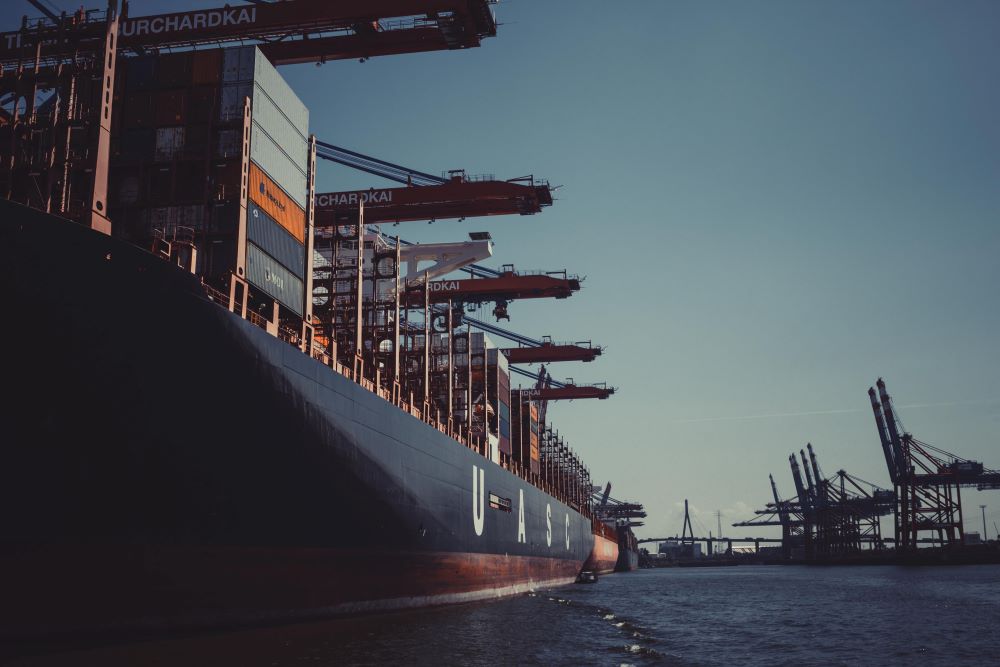Shipping industry leaders have pledged to dramatically increase the use of zero-emissions fuel derived from renewable-based hydrogen to about 11 million tonnes by 2030. This move sends a strong message to the burgeoning industry, as noted by RMI on December 6, 2023.
At the COP28 event, thirty prominent figures in the shipping industry – encompassing cargo owners, ship operators, ports, bunkering companies, and equipment manufacturers – signed a Joint Commitment. This initiative, facilitated by the UN High Level Champions and RMI, aims to promote the use of renewable hydrogen-derived fuels within this decade to achieve the decarbonization targets of the maritime sector. The Commitment sets specific goals for fuel usage, fleet development, and port infrastructure essential for scaling up the green hydrogen industry.
To meet the International Maritime Organization (IMO)’s 2023 Strategy targets, adopted by 175 member states, ships will need to reduce their greenhouse gas intensity by 86% by 2040. This necessitates a swift and substantial shift to zero or near-zero emission fuels, with green hydrogen-derived fuels like ammonia and methanol playing a pivotal role. Legally binding international regulations, effective from 2027, will mandate the use of low-emissions fuels.
Takeshi Hashimoto, CEO at Mitsui O.S.K Lines, Ltd. (MOL), highlighted the diversity of fuel solutions required for different shipping businesses, including hydrogen and ammonia, to achieve net-zero emissions by 2050. MOL plans to collaborate with various partners to promote the adoption of these new fuels.
Under the Commitment, green hydrogen producers have agreed to generate 11 million tons of low-emissions fuel for the shipping sector by 2030. In the long term, the decarbonized global shipping sector is expected to be a major demand driver for green hydrogen, accounting for about 15% of the total demand by 2050.
Alex Hewitt, CEO of CWP and chair of the Green Hydrogen Catapult, emphasized the importance of global collaboration for decarbonizing shipping with green hydrogen. This endeavor goes beyond building large green energy projects; it’s about catalyzing change and scaling up swiftly.
The project also requires significant international coordination and investment to ensure the availability of fuel supply and infrastructure at ports on both sides of shipping routes.
Sam Cho, Port of Seattle Commission President and Co-Chair of The Northwest Seaport Alliance, mentioned ongoing initiatives for green corridors focusing on cruise to Alaska and cargo with the Republic of Korea. A critical step is aligning strategies with future planning and investment in fuel supply regionally and globally.
Ports and their enablers have also pledged support, committing to invest in infrastructure and safety projects to facilitate the refueling of ships with green hydrogen and its derivatives.
Rasmus Bach Nielsen, Global Head of Fuel Decarbonization for Trafigura, emphasized the need to switch to zero-emission fuels derived from renewable-based hydrogen for deep decarbonization of shipping. Such commitments should encourage investment by ports serving shipping routes in the required infrastructure, thereby incentivizing green hydrogen production.
Keld R. Demant, CEO of Bunker Holding Group, reiterated support for the IMO GHG Strategy for decarbonizing the shipping industry. Success requires collaboration among all industry stakeholders along the value chain.
Equipment manufacturers have also joined as signatories, committing to support research and development for deploying green hydrogen-based fuel in the maritime sector.
Uwe Lauber, CEO of MAN Energy Solutions, stated that green hydrogen and derived fuels will play a major role in all future-fuel scenarios. MAN Energy Solutions’ subsidiary, H-TEC SYSTEMS, is building a facility for PEM electrolysis stacks for green hydrogen, contributing to the market for zero-emission fuels.
Signatories have urged governments to support private sector collaboration with ambitious fuel standards and clean fuel mandates. To date, 41 governments have developed national hydrogen strategies, many addressing the shipping sector. Further action is needed for well-to-wake emissions accounting to create a policy environment conducive to low-emissions fuels.
Nielsen at Trafigura called for the adoption of a GHG pricing mechanism by the IMO and member states to ensure a just and equitable transition. Demant from Bunker Holding Group added that the IMO should adopt pricing incentives and requirements for alternative fuels to stimulate demand and supply, essential for investments in production, infrastructure, and new vessels.



